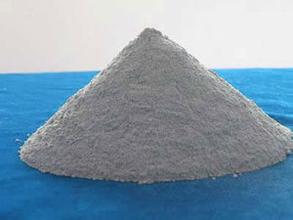
Dolomite Powder is the limestone powder with composition of CaCO3 and MgCO3 pertaining to 100% in combination, the proportion being varied as per mining zone. Dolomite is also being used as Fillers by detergents, steel, paints and ceramics.We offer a highly versatile range of mineral powder which is used in various industries. Dolomite mineral is a double carbonate of calcium and magnesium and it exhibits a granular structure. It has high natural whiteness and its noted for their ease of dispersion. Its use improves properties such as wheather ability, reduces shrinkage, fissure development and water absorption. We use best quality machines to ensure the quality of our Dolomite mineral.We have carved a niche as one of the Dolomite Ore Manufacturers in India. In nature, considerable variations in the composition of dolomite relating to lime and magnesia percentages are found. When the percentage of CaCO3 increases by 10% or more over the theoretical composition, the dolomite mineral is termed 'calcitic dolomite', 'high-calcium dolomite' or 'lime-dolomite'.With the decrease in percentage of MgCO3, it is called 'dolomitic limestone'. With the variations of MgCO3 between 5 to 10%, it is called 'magnesian limestone', and upto 5% MgCO3 or less it is taken to be limestone for all purposes in trade and commercial parlance. Dolomite mineral usually contains impurities, chiefly silica, alumina and iron oxide. For commercial purposes, the percentage of combined impurities should not go beyond 7% above which, it becomes unsuitable for industrial use. It is then used only for road ballasts, building stones, flooring chips etc.
Dolomite Powder Specifications:
Mesh : 200 to 1250
Partical Size : 150 to 3 Microns
Brightness : 90 TO 98%
Whiteness : Up to 98%
Spicific Gravity : 2.85
Oil Absorption : 20
Packing : 25/50Kg.
Colour : Super Snow White
Dolomite Powder Industrial Application:
Dolomite powder is chiefly used as refractory, ramming, and fettling material in steel melting shop, and as fluxing material in blast furnace operation in secondary steel and ferromanganese manufacture. To a lesser extent it is used in the glass industry especially in sheet-glass manufacture. It also finds use in the manufacture of mineral wool.In England, dolomite has become a useful source for the production of magnesite by reacting calcined dolomite with sea-water. The UK is meeting nearly 50% of her magnesite requirements by this method. Dolomite is also a good source of magnesium metal. The magnesium metal is extracted from dolomite by the well-known fero-silicon process.Dolomite decomposes completely above 900ºC. The product resulting from this relatively low-temperature calcination is highly porous and reactive and is known as 'calcinated dolomite'. Dolomite powder is sometimes used both in the raw and calcined form as refractory material for hearth maintenance and for banking door in open hearth furnaces.For most refractory uses, it is desirable to subject the dolomite to a heat treatment at a high temperature of the order of 1700ºC, to shrink the material thoroughly and render it less reactive. Dead burnt (D.B.) dolomite is sthe term generally used for the refractory made by firing dolomite, with or without additives, at high temperature to produce dense, well-shrunk particles.In basic converters the bricks employed are generally of D.B. dolomite and sometimes also of D.B. magnesite. Dolomite bricks are kept in the outer lining because it has lower thermal conductivity than magnesite.

 sales@clirik.com
sales@clirik.com +86-21-20236178 86-13917147829
+86-21-20236178 86-13917147829
 sales@clirik.com
sales@clirik.com +86-21-20236178 86-13917147829
+86-21-20236178 86-13917147829
